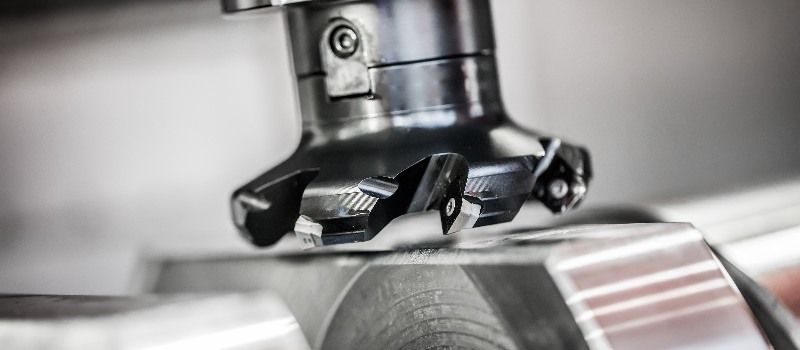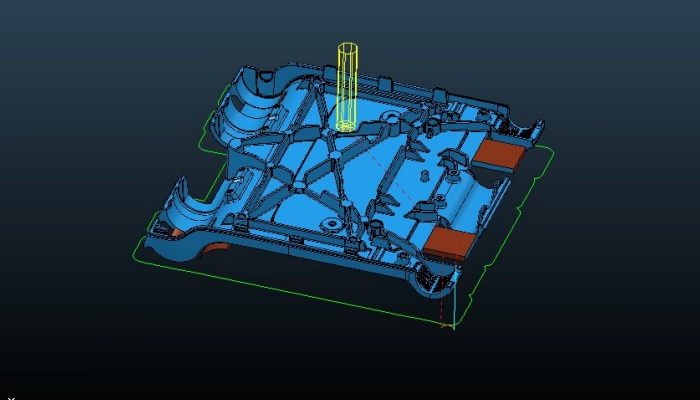Email: enquiry@cksmachining.com Tel: (+86) 18022058253
Comprehensive Guide to Face Milling:Essential Processes and Practical Tips for Mechanical Engineers

The manufacturing industry has undergone multiple industrial revolutions, evolving from primitive handcrafting to today’s precise and efficient CNC technology. One of the most prominent and commonly used techniques in CNC machining is face milling. In this comprehensive guide, we will explore the usage of face milling, its processes, the tools involved, its differences from other machining methods, and the resulting surface finishes. Additionally, we will provide valuable face milling tips to help you achieve the best results in your projects.
Contents
What is Face Milling?
Face Milling vs. Peripheral Milling: Understanding the Differences
How to choose cutting tools for face milling
Practical Tips for Effective Face Milling
Kingsun’s Role in Improving Face Milling: Milling Projects
Materials and Surface Finish in Face Milling
Factors Affecting Surface Finish
Face milling is a common CNC milling process. During actual machining, the cutting tool on the machine spindle rotates at
high speed perpendicular to the workpiece. Technicians use programming techniques to control the tool to remove excess
material from the top, making it a subtractive process.

The workpiece moves irregularly across multiple axes (X, Y, and Z) on the worktable during cutting. This process can
produce parts with high quality and surface smoothness. Unlike traditional milling methods, face milling excels at creating
flat, smooth surfaces with high precision. We often use diamond tools to achieve mirror-like finishes.
Face milling is widely used across various industries, including automotive, aerospace, and medical sectors, due to its ability
to produce parts with high dimensional accuracy and excellent surface quality. This process is crucial for creating
high-gloss surfaces, enhancing the effect of surface treatments.
Face Milling vs. Peripheral Milling: Understanding the Differences
In CNC machining, face milling and peripheral milling are two fundamental techniques, each with unique characteristics, applications, and benefits.

• The axis of the cutting tool is perpendicular to the workpiece.
• Material is removed from the surface of the cutting tool, providing a smooth and flat surface.
• Face milling is a preferred finishing method for achieving high surface smoothness.
• It is ideal for creating complex parts with high precision in various geometric shapes.
• Face milling is efficient in material removal.
Peripheral Milling:

• The axis of the cutting tool is parallel to the workpiece.
• Material is removed from the sides of the cutting tool.
• Suitable for roughing operations and creating large, flat surfaces.
• Commonly used for cutting the exterior and cavities of parts.
• Side cutting can achieve high surface smoothness and dimensional accuracy, improving the part's appearance and
usability.
Engineers must understand various machining methods to choose the right one for improving part accuracy and surface
quality while increasing production efficiency. For example, we use peripheral milling to remove large amounts of material
when machining cavity-type products. For parts with many flat surfaces, we use face milling, which is better suited for
applications requiring high surface smoothness.
How to choose cutting tools for face milling
The success of the face milling process largely depends on selecting the right cutting tool. Here are the two main face milling
End mills

End mills are versatile tools with cutting edges used to remove large amounts of material from the end and sides. They are
particularly effective for:
• Creating complex tool paths, suitable for roughing and finishing.
• Machining various complex patterns, small surfaces, contours, and slots, commonly used for peripheral milling and
secondary roughing.
• End mills come in various shapes and sizes, including ball-end mills, chamfer mills, corner-rounding end mills, and flat-end mills.
Each type is chosen based on product characteristics when designing the tool path.
• Common materials for end mills include high-speed steel (HSS) and carbide, with performance and lifespan related to material
and hardness.
Shell Mills

Shell mills are the most commonly used tools in face milling. They have multiple cutting teeth and inserts, requiring
different inserts for different materials. Made from materials such as carbide and diamond, they offer excellent wear
resistance and durability. Key features include:
•Balanced cutting forces.
•High precision and control over material removal.
•Consistent high-quality surface finish.
Although shell mills are highly efficient, engineers need to regularly replace inserts based on the material being machined
to maintain optimal performance, properly maintaining and timely replacing inserts to prevent inconsistent dimensions due
to tool wear.
Practical Tips for Effective Face Milling
Achieving precision and cost-effective face milling requires adherence to best practices. Here are some expert tips:

•Tool and Speed Combination: Engineers should always use the recommended spindle speed and appropriate tools to reduce
machine wear and ensure clean cutting. Machining speed depends on various factors, such as the material being machined,
product structure, tool type, and desired surface finish.
•Tool Usage Method: Offset the cutting tool from the center of the workpiece for light chips, resulting in cleaner cuts and finer
surface finishes. This technique reduces cutting forces on the tool, extending its life and performance.
•Optimize Tool Path: Engineers should program tool paths to avoid frequent tool entry and exit, as this can stress the cutting
edges and affect the machined parts. Continuous cutting helps maintain stable cutting and improve surface quality.
Kingsun’s Role in Improving Face Milling: Milling Projects

Kingsun is a leading provider of advanced machining services worldwide. Our team of skilled engineers and quality control
experts ensures every product meets the highest manufacturing standards. Here’s how Kingsun can enhance your face milling
projects:
•Advanced Machinery: Our CNC face milling machines are equipped with the latest technology, providing precise and consistent
results. These machines offer high-speed machining capabilities, enabling quick production without compromising quality.
•Expertise: Our team comprises experienced engineers who understand the complexities of milling and can optimize processes
for your specific needs. Our expertise spans various industries, allowing us to confidently tackle diverse projects.
•Quality Control: We implement strict quality control measures to ensure every part meets required specifications and standards.
Our quality control team uses advanced inspection tools and techniques to verify the accuracy and integrity of each part.
•Customization: We offer tailored machining solutions to meet the unique needs of each project, ensuring your designs achieve
the highest accuracy and efficiency.
Materials and Surface Finish in Face Milling
Material selection and the desired surface finish are critical factors in face milling. Different materials exhibit unique
machining characteristics, and achieving the desired surface finish requires careful consideration of cutting parameters
and tool selection.

Common Materials:
•Aluminum: Aluminum has low density and is easy to machine. It requires sharp cutting tools and high spindle speeds to
achieve smooth surfaces and high gloss.
•Copper: Copper has good corrosion resistance and excellent machinability. It is easy to machine and can achieve
high-quality surfaces and precise dimensions.
•Steel: Steel has high strength and durability but requires stable and rigid machines. We usually recommend using
high-speed steel (HSS) or carbide tools with moderate cutting speeds and feed rates.
•Stainless Steel: Stainless steel is wear-resistant and difficult to machine. It requires rigid machines, slower cutting
speeds, and appropriate coolant to reduce heat and improve tool wear resistance and durability.
•Titanium: Titanium is strong and lightweight but generates a lot of heat during machining and can catch fire due
to its low ignition point. Fast cutting speeds, sufficient coolant, and carbide tools are necessary to prevent tool wear
and achieve fine finishes.
Factors Affecting Surface Finish

1.Cutting Tool Selection:
•Material: Common materials include carbide, diamond, and high-speed steel (HSS). Compared to HSS, carbide
and diamond provide superior surface finishes.
•Geometry: Tools with more cutting edges and sharper angles or different geometries.
2.Cutting Parameters:
•Speed: Higher spindle speeds can improve surface finish but may increase the risk of tool wear.
•Feed Rate: Lower feed rates usually produce better surface finishes but increase machining time and cost.
•Cutting Depth: Shallower cutting depths can reduce tool stress and improve surface quality.
3.Material Characteristics:
•Softer materials tend to produce better surface finishes, requiring sharper tools to avoid part deformation.
4.Machine Condition:
•Stability: Rigid machines can reduce vibrations during machining, improving surface finish.
•System: Advanced systems optimize tool paths for smoother machining, ensuring consistency and finer surface textures.
5.Coolants and Lubricants:
•Type: Using the correct coolant or lubricant can significantly reduce friction and heat, improving surface finish.
•Application Method: Effective application methods, such as water or mist cooling, can achieve optimal cooling and
prevent product deformation due to heat.
Conclusion
By understanding these factors and adopting best practices, engineers can achieve the desired surface finish in face
milling operations, enhancing the final performance and appearance of the products.